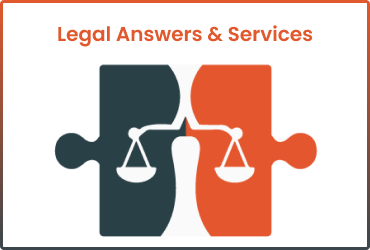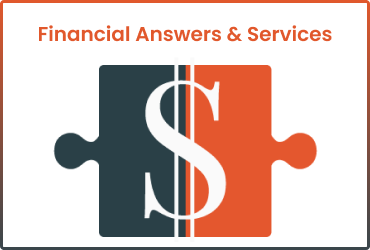Learn About Theft and Fraud Crimes
Wide Spectrum of Theft and Fraud Crimes
Theft and fraud crimes, including credit card fraud and identity theft, encompass a broad range of criminal behavior, which, under some jurisdictions, is defined as larceny and can include minor offenses ranging from shoplifting to sophisticated white-collar crimes, such as embezzlement and cybercrimes, as well as violent forms of larceny, including armed robbery and burglary.
The term larceny has also been applied to credit card fraud and identity theft, which is the major focus of this article.
Credit Card Fraud – Identity Theft
Personal Identifiers
While identity theft can take different forms, they all share one commonality. They begin with the theft of personal information, otherwise known as personal identifiers.
These personal identifiers include Social Security numbers, passport numbers, driver’s license numbers, taxpayer identification numbers, bank account numbers, and credit card numbers. Personal address information: street address, email address, and residential telephone numbers.
ATM Credit Card Skimmers
Identity theft is the most common means by which credit card fraud occurs. It often begins with the installation of a credit card skimmer. The device is covertly installed on top of the A.T.M. keypad or over the card insertion slot.
The most targeted ATMs are located in gas stations and convenience stores. The device reads the credit card information and identification number. Credit card thieves can access your account or open up new ones with this information.
Dark Web And Online Purchase Scams
Other criminal uses of identity theft include accessing personal information through online purchase scams or on the dark web. This is a form of cybercrime, and there are consumer digital laws to protect you.
The dark web is a term used to describe the location of web content that is accessible only to particular browsers or through specific network configurations.
While using the dark web is not illegal, it provides access to web content that is not indexed by search engines, such as bank accounts, email accounts, and certain databases.
The identity thief can then submit fraudulent credit card applications to banks.
Common Victims of Fraud and Identity Theft
Being the victim of credit card fraud and identity theft can be an embarrassing experience for an older person. It can leave a victim feeling vulnerable and confused. This is especially true in financial elder abuse cases, and it has been a growing problem in elder care facilities across the nation.
Fortunately, most credit card victims are protected under consumer protection laws, such as the Fair Credit Billing Act, which limits consumer liability in cases of identity and credit card fraud.
Federal Penalties for Identity Theft and Credit Card Fraud
According to government reports, identity theft is not a singular crime; rather, it is a series of crimes. Identity theft and the resulting credit card fraud typically include other types of crimes.
These crimes are not always considered lesser-included offenses but are, in fact, independent crimes that carry additional prison time.
Under federal law, it is a crime to misuse someone’s identifying information, such as bank statements, driver’s license numbers, Social Security numbers, and credit card information, with the intent to commit a crime.
Aggravated Identity Theft Under Federal Law
It wasn’t until 1998 that Congress made identity theft a federal crime. The Identity Theft Penalty Enhancement Act (18 U.S.C. § 1028) was created to increase the penalties for aggravated identity theft.
Aggravated identity theft is the unlawful use of another’s identity to commit additional felonies, such as social security fraud, insurance fraud, cybercrimes, and cover-up immigration violations that would otherwise result in deportation from the United States.
Increase Prison Terms For Aggravated Identity Theft
The following two examples of federal aggravated identity theft resulting in increased prison terms are:
If convicted of identity theft involving the criminal use and possession of equipment to produce counterfeit documents, the penalties include up to 15 years in prison.
If convicted of identity theft at trial for the purpose of drug trafficking, or it was connected to a violent crime or homicide, the penalties can include up to 20 additional years in prison.
Other Forms Of Theft And Fraud Crimes
The Crime of Burglary
Over time, elements of burglary expanded in its scope and reach. The common-law crime of burglary used to require breaking and entering of another’s dwelling with the intent to commit larceny therein.
To see just how much the crime of burglary has expanded, consider California’s Penal Code 459, which broadly describes burglary as “[T]he entering of any commercial or residential structure or locked vehicle with the intent to commit grand theft, petty theft or any felony offense once inside.
Almost any enclosed area qualifies under the former structure requirement, including a locked vehicle. A person may be charged with burglary even where there is no forced entry, and the intent to limit the crime to larceny is no longer required – any crime satisfies the intent requirement.
The Crime of Bribery
The crime of bribery has been defined as the unlawful giving of something of value to another person with the intent of unlawfully influencing or inducing that person to act or refrain from acting in their official capacity.
The target of the bribery scheme does not have to be a public official. Those who are temporarily serving in a fiduciary capacity or those who are sworn in a judicial proceeding also qualify as targets of bribery.
For example, in recent years, organized crime has used bribery as a means to influence jurors on their verdict or pay a witness to give false sworn testimony.
The Crime of Embezzlement
Embezzlement is a type of fraud and is often regarded as a white-collar crime. The crime occurs when a person, usually a fiduciary, is entrusted with another’s funds or assets and then misappropriates them for the embezzler’s own personal benefit. Embezzlers expose themselves to both civil and criminal liability for their actions.
A key element is that the embezzler obtains the funds or assets lawfully and therefore has the legal right to possess them, but then uses that possession for a felonious purpose – to enrich themselves.
Embezzlement typically occurs within the framework of an employer-employee relationship, where the employee holds a position such as bookkeeper or chief financial officer.
Ponzi schemes are another form of embezzlement, typically involving a sophisticated scheme to defraud investors.
Federal Sentencing For Larceny
Federal sentencing guidelines related to larceny include the base crime and eighteen aggravating factors. Given the broad spectrum between larceny and aggravated larceny, federal prison terms can range from a few months to twenty years or more if the larceny is accompanied by other crimes, such as causing physical harm or using a weapon in the commission of the crime.
Common Misconceptions About Theft and Fraud Crimes
1. “If I didn’t physically steal anything, I can’t be charged with theft.”
Reality:
You can still be charged with theft or fraud even if you never touched the stolen property. That is difficult to understand, but the truth is that theft includes deception, trickery, and unauthorized use, such as using someone’s credit card without permission or falsifying information to gain goods or services.
The essence of the criminal conduct is the intent to deprive the rightful owner of their property, which is what matters, not whether you physically carried it away.
2. “It’s not a crime if I return the money or merchandise later.”
Reality:
In most cases, returning stolen property does not erase the crime; it merely acknowledges the act. While it may help during sentencing, the crime of theft or fraud occurs at the moment you unlawfully take or use someone else’s property or deceive them for gain. Restitution may reduce penalties, but it doesn’t eliminate criminal liability.
3. “Fraud is just a civil matter unless a huge amount of money is involved.”
Reality:
Fraud is often both a civil and a criminal matter, regardless of the dollar amount. Acts like writing bad checks, insurance fraud, or using false information to receive government benefits can result in misdemeanor or felony charges and jail or prison time, even if the amounts seem small.
4. “Shoplifting is just a minor offense—it’s basically a slap on the wrist.”
Reality:
Shoplifting can carry serious criminal consequences, especially for repeat offenders. Many states have thresholds (often around $500–$950) above which shoplifting becomes a felony. Additionally, even a first offense can impact employment, result in deportation, or lead to a change in immigration status, and create a permanent criminal record.
5. “If someone gave me their login or PIN, I can legally use their bank account or credit card.”
Reality:
Even if someone shares their login or PIN, using their account without clear, informed, and ongoing consent can still be considered unauthorized access or fraud, especially if money is moved in a way the owner didn’t expect or approve. Consent must be explicit and current, not implied or assumed.
6. “Identity theft only happens through hacking.”
Reality:
Identity theft often occurs through low-tech methods, such as stealing mail, snooping through paperwork, or misusing information from social media. It’s not limited to strangers online.
Ironically, friends, relatives, and roommates are frequently the perpetrators in real-world cases of identity fraud.
7. “Using someone else’s discount code, benefits, or social security number isn’t really a crime.”
Reality:
Using another person’s government ID, medical benefits, employee discount, or even student credentials without permission is considered fraud or impersonation.
Many states treat this as a felony, particularly when it is used to obtain services, financial aid, or health benefits under false pretenses.
Next Steps to Consider If Arrested for Theft or Fraud
If you’ve been arrested for a theft or fraud crime, your next steps are critical—both legally and strategically. Here’s what you should do immediately to protect yourself and why, along with examples:
1. Do Not Talk to Police Without a Lawyer
Why: Anything you say can—and will—be used against you. Law enforcement may act friendly or imply that cooperation will help, but even minor admissions can damage your case.
Example: Saying “I only took a little” may seem harmless, but it’s a confession to intent, which is key in proving theft or fraud.
2. Contact a Criminal Defense Attorney Immediately
Why: A skilled criminal defense lawyer can protect your rights, negotiate bail, gather evidence in your favor, and guide your case from the start, before charges are even formally filed.
Example: A defense lawyer may be able to reduce your charges from a felony to a misdemeanor or even have them dismissed by identifying flaws in the arrest or evidence. This is known as plea bargaining, a common practice in criminal cases.
3. Avoid Discussing the Case with Anyone Else
Why: Friends, co-workers, even family members can be subpoenaed to testify about statements you made. Anything you post or text is discoverable evidence in a criminal trial.
Example: Telling a friend, “I only did it because I was broke,” can later be used in court to prove motive and intent, which are essential elements of a crime.
4. Preserve Evidence That May Help Your Case
Why: You may need proof of permission, misunderstanding, or lack of intent—critical defenses in theft or fraud cases.
Example: If you’re accused of misusing someone’s credit card, and you have text messages showing they gave permission, this could make a huge difference.
5. Show a Willingness to Cooperate Through Your Attorney—Not Directly
Why: Expressing regret, willingness to repay losses, or engage in restitution may help during plea negotiations or sentencing, but it must be handled carefully.
Example: In a first-time check fraud case, your lawyer may negotiate diversion, allowing you to avoid jail and have charges dismissed, usually after repayment and counseling.
6. Understand the Charges and Consequences
Why: Theft and fraud laws vary by state and depend on the amount taken, method used, and whether you’re a repeat offender. Your lawyer will help you understand possible penalties and defenses.
Example: In California and other states, stealing merchandise over $950 is grand theft, potentially punishable by up to 3 years in jail—but a lawyer may help qualify you for Prop 47 relief if it’s a non-violent first offense.
7. Stay Off Social Media
Why: Prosecutors routinely review Facebook, Instagram, TikTok, and other platforms for evidentiary signs like going on spending sprees or inconsistent statements that might reflect poorly on them or contradict prior admissions.
Example: A fraud suspect claiming financial hardship posted photos with designer bags and champagne—the DA used this in court to argue a lack of remorse.
Criminal Defense Insights
TroubleTip: If you’re arrested for theft or fraud, remain silent and seek legal help immediately. Gather any helpful records, and protect yourself from further legal exposure. These early actions can make or break your defense.
























